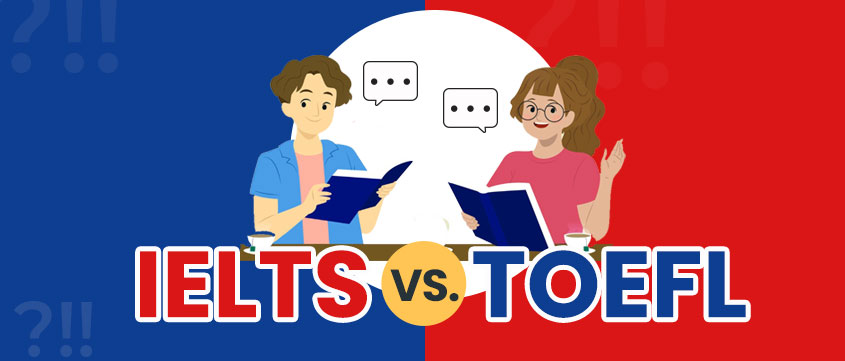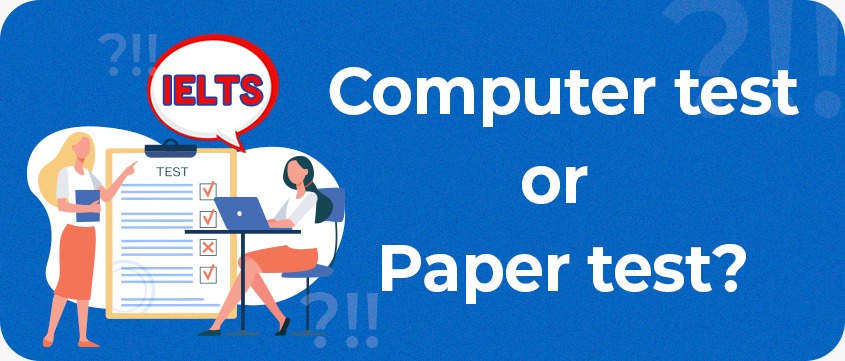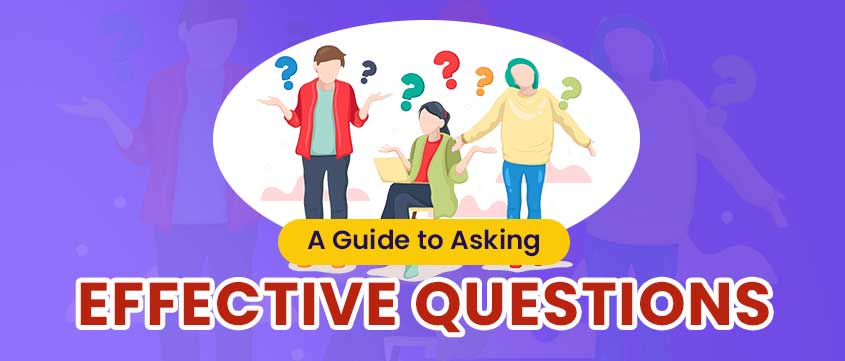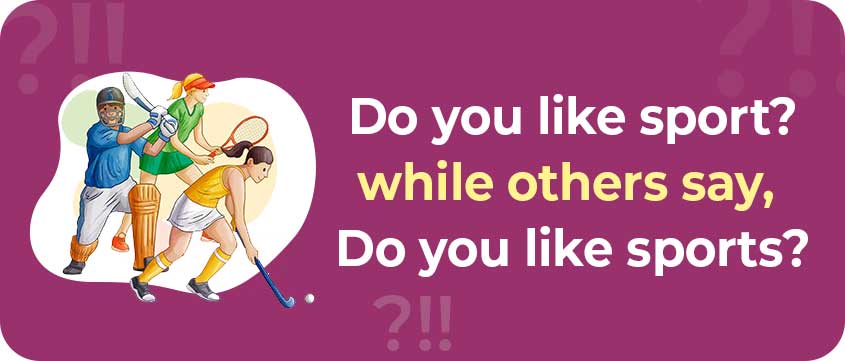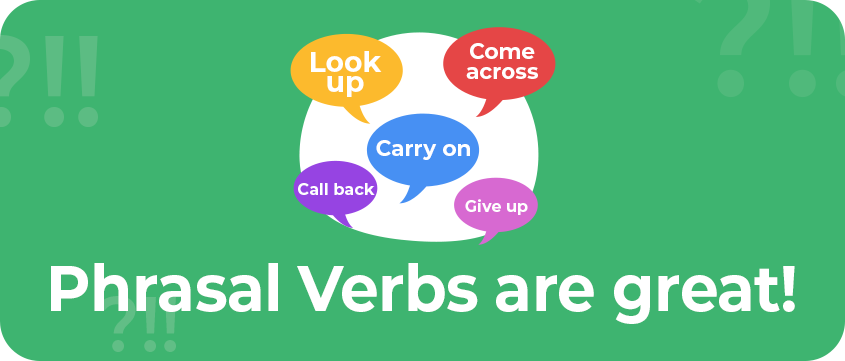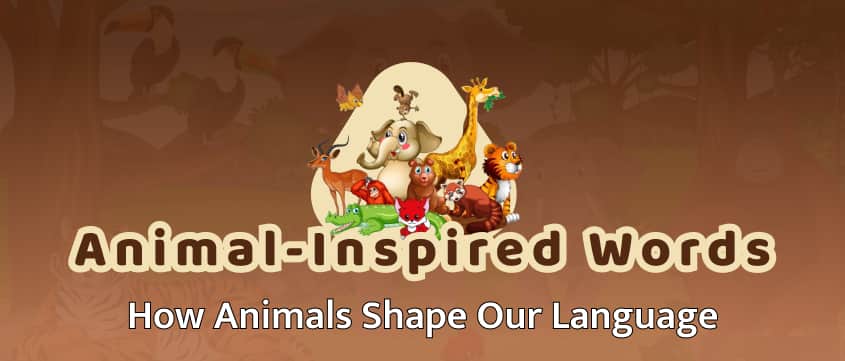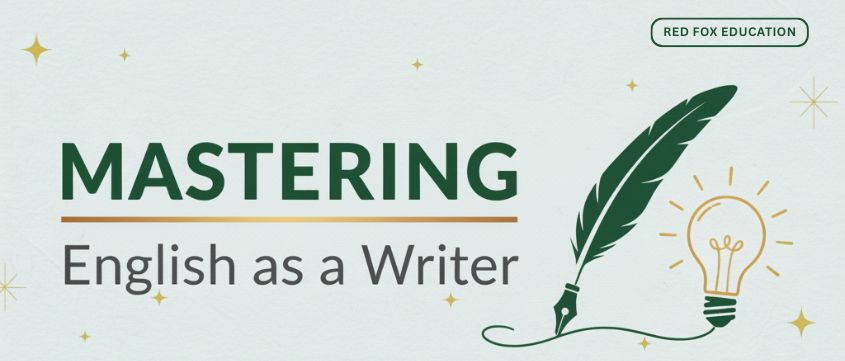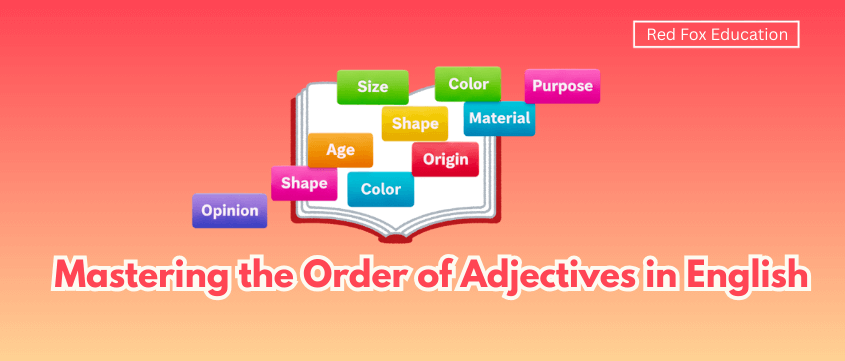A common question asked of test preparation tutors is ‘Should I take IELTS or TOEFL?’ This is often followed up with, ‘which one of the tests is easier?’ The candidate usually wants a definitive answer and expects the tutor to say one test or the other.
The actual answer is: it depends on you and your future plans. Now, that’s probably not the answer you were expecting.
As usual with matters to do with one’s education and future, the answer is not straightforward or simple. For example, the choice of the best university requires consideration of a number of variables, and the answer will not be the same for all students.
Looking at which English proficiency test to take is an indirect comparison, but it also require you to evaluate variables. And these are usually related to what and where you want to study for your higher education, and to some extent, on your strengths and weaknesses as an English user.
In terms of the location, gone are the days when American universities only accept TOEFL to satisfy second language requirements, or where British institutions insist on IELTS. The vast majority of universities and colleges around the world will accept either, as well as certain other tests, to satisfy the entry conditions for language proficiency.
However, many commentators still believe that generally American institutions favour TOEFL while their British and Australian counterparts have a preference for IELTS. This will be denied by the universities of course, but if one looks at web pages on entry requirements for some universities, the subtle preferences are there. [I could mention a few names but should probably not to that!]
The other consideration is whether you need a Visa, as many overseas students do, for studying abroad. Almost all UK universities accept IELTS UKVI academic version, which also satisfies Visa entry requirements, so you are killing two birds with the same stone (to adopt a common idiom). The Canadian Language Benchmark, a Visa requirement for entry into Canada, also accepts IELTS. The logical conclusion, therefore, is that IELTS will serve you better if you wish to study at a British or Canadian university.
Moving on to the scores needed for common entry requirements for international students. These also vary considerably depending upon the institution and the course. Some places/courses require an IELTS overall band score of 6.5 or a TOEFL score of 90 (or thereabouts). Many institutions have ‘upped the ante’ and now ask for band 7.0 IELTS or 100 for TOEFL. Some specific courses may need even higher scores; for example, Warwick University, a Russell Group institution in England, requires a TOEFL score of 109 or IELTS band 7.5 for its designated Band C courses, and even higher for Band D courses.
So, let’s now compare the two tests and consider how we might best achieve these scores. As mentioned above, we may take IELTS band 7.0 or a TOEFL score of 100 (so, an average of 25 per module) as a general benchmark.
Firstly, both tests include modules in listening, reading, speaking and writing, but there are some notable differences in the format, style and difficulty levels. Let’s start with the test experience. TOEFL is entirely computer based whereas IELTS offers either a paper-based or computer version of the test. In any event for IELTS, whether you choose paper or computer, the speaking test is a one-on-one conversation with an examiner (i.e. a real person!). Now, let’s consider each module in turn.
Reading – each test includes three passages; there are 14 questions per passage for TOEFL, with a total of 45 marks on offer since the final question can earn two; IELTS contains 40 questions overall. 35 marks are needed in TOEFL to achieve a converted scale score of 25, so that’s 12 per passage to be safe; 30 out of 40 will score you band 7.0 in IELTS.
Many candidates say that TOEFL reading is harder. The passages are almost all taken from academic works, the concepts can be difficult to fully understand, and the topics are invariably excruciatingly boring. These elements are slightly easier in IELTS reading passages.
That being said, the TOEFL test invariably follows a set pattern where the question types are easier to predict. One can expect an average of 12 vocabulary questions (the American tests are obsessed with vocabulary), which for many candidates with a reasonable range of lexical resource means 10, 11 or even all 12 marks comfortably in the bag. Even if one’s vocabulary is more limited, the TOEFL test is all multiple choice, so there is at least a 25% chance. There are other relatively easy question types as well – pronoun identification, paraphrased sentence, extra sentence placement – all of these are not too difficult; the final question calling for three answers to identify the important points in the passage is also a ‘banker’ for two marks. So, that’s roughly 9 marks scored for each passage out of the 12 needed leaving only 3 marks to get from the more difficult question types, such as inference questions which are especially hard.
In IELTS reading, the passages are more varied and there are more question types, and these can be spread over the three sections. However, some are predictable; for example, passage one will always include True, False or Not Given (an identification question type) as well as gap-fill, which can be relatively easy; matching questions are always in part 2, which many candidates find difficult; part 3 usually has Yes, No or Nor Given (identification again) plus multiple choice.
The question format is therefore, rather different form TOEFL. While the latter is all multiple choice, IELTS includes questions that ask you to find words from the passage, match paraphrasing, find the main theme of a paragraph or specific details within it. The questions are, therefore, more varied, and for this reason is considered by many tutors to be a better overall test of reading comprehension.
Overall, taking all of the above factors into account, which test is easier for each individual is subjective. What are your individual strengths and weaknesses in terms of vocabulary and ability to interpret paraphrasing? That should determine the choice.
Listening – other than the fact that you are listen to recorded audio tracks and find answers from the narrative, there is little that is the same in the two tests. There are six listening sections in TOEFL with a total of 34 questions and you need 30 of them correct to hit the scaled score of 25. IELTS includes four parts each with 10 questions from which you need a total of 30 out of 40 to score band 7.0.
TOEFL listening features all American voices and the topics are almost always academic subjects, very often about American issues (history, geography, architecture, culture etc.). There are sections featuring classroom teaching, lectures and conversations, but all have that study-related theme. The six sections always follow the same pattern and for that reason the test, and the types of questions, are predicable, which can aid preparation for the test. There are also vocabulary questions (similar to the reading) which can be quite easy, and all of the questions are in a multiple choice format.
Turning to the IELTS listening test, it is again more varied in terms topics, question types and speakers – the accents are primarily British and Australian, but at least one speaker will have an American accent, or European, South African or Middle eastern. The paper version of the test also gives the candidate 10 minutes at the end of the test to write up the answers on to the answer sheet; 2 extra minutes are given for checking answers in the computer version. This can be an advantage – there is no similar extra time allowed in the TOEFL test.
However, 30 out of 40 should be achievable for most candidates taking IELTS while for TOEFL test-takers, 30 out of 34 is a very big ask indeed. That simple fact makes the TOEFL listening more difficult.
Writing – both tests include two parts; in TOEFL these are called the Integrated and the Independent tasks; in IELTS, simply Task 1 and Task 2. As you expect by now, the grading is very different – in TOEFL each part is grade out of 5 and the grading is carried out by a combination of AI and human raters (whatever that means). To achieve the 25 scaled score, the candidate needs a total of 8 out of 10. The IELTS Task 1 report and Task 2 essay are graded by different examiners, each out of 9 based on four criteria. These scores are then averaged together (with two thirds of the marks for task 2 and one third for task 1) to give the writing band score.
The TOEFL integrated writing follows the same pattern in every test where you are given a short passage to read in which the writer makes three points about an academic subject. You then listen to a short lecture about the same topic where the speaker disagrees with each of these three points. You then need to summarise the points made in the lecture explaining how the speaker disagrees with the writer about these three issues.
This task is relatively simple. If one thoroughly learns the correct way in which to set out the report and how to properly and concisely summarise the points then it is relatively easy to score 4 out of 5.
In comparison, the IELTS task 1 report is more challenging. The task requires you to select and report the main features from presented visual data. There are several different forms – line graphs, bar charts, tables, pie charts, diagrams, plans etc. – and each requires specific language and a different approach; this means there is a lot to learn! To score 7.0 can be beyond many candidates, the plan often being to get to 6.5 and rely on Task 2 (which carries more marks) to achieve the required score.
There is not a lot of difference in the second task. Both tests involve writing a discursive essay about the given topic. In each case one needs to learn how to structure the essay, how to introduce and develop arguments, and how to effectively express opinion. If you can do that, then 4 for TOEFL or band 7 in IELTS should be within your reach.
Speaking – the general difference here is the test experience. The TOEFL test is a fully computer-based test, so you speak to the computer which records your responses. This can be disconcerting for some candidates – the computer will begin recording once the given preparation time (which is rather short) has ended, whether you are ready or not; and will stop recording after the specified time (45 – 60 seconds) whether you are finished speaking or not. In contrast, the IELTS speaking test is a one-on-one conversation with the examiner.
In terms of the content, the TOEFL speaking can be quite straightforward. The test follows the same pattern every time making the preparation rather easy. For example, the first two sections give you a topic line and you speak for 45 seconds, with 15 seconds to prepare; then there are two sections (#3 & 5) where you listen to a conversation between two people which you then summarise; and two extracts from lectures(sections 4 & 6) for you to listen and summarise.
So, taking section 5 as an example, you listen to a conversation between two students; one of them outlines a problem they have, and they then discuss two possible solutions to that problem. You have 20 seconds to prepare and then you summarise the conversation, explaining the problem and the solution that you would recommend and why. The pattern is the same every time, so it is possible to plan and practice how to do this timely and effectively.
The grading system is also quite favourable. Each of the 6 sections is marked out of 4, and you need a total of 20 to achieve the target scaled score. So, that’s at least 3 for each section, with 4 for at least two sections. With the right preparation, that is not too difficult to reach.
IELTS speaking is more varied. The format of the test is the same each time, but the variation of topics and the detailed grading (from 0 – 9) make the target score of band 7.0 more of a challenge for many candidates.
Ok, to cut to the chase, here is a simple and very brief summary of the comparison:
Reading – there is not a lot of difference; each have certain things that are easier and more difficult respectively.
Listening – the differences in grading of the listening tests definitely render the TOEFL listening module more difficult.
Writing – the integrated writing in TOEFL is definitely easier than the IELTS Task 1; there is little difference between the essays for the second task.
Speaking – if you are not ‘freaked out’ by giving recorded answers in the TOEFL test, then the format and the grading criteria for TOEFL can make the speaking part easier than IELTS.
At Red Fox Education, we are always here to help you. If you want a detailed discussion with an experienced test preparation instructor to discuss your personal circumstances and discover which test is better for you, then this is easily arranged!
Also, we have a range of courses to help you prepare for your test – visit our website for more details, or send us an email.
www.redfoxeducation.com
email: contact@redfoxeducation.com
email: contact@redfoxeducation.com
What is Red Fox Education?
Red Fox Education is an Online British School; we aim to provide the best online English learning service and offer the widest range of products and services such as Live online classes (British & Indian tutors), Self-learning courses, Certification courses, Tests and Assessments, Podcasts, Quizzes, Speech buddy, Stories, Ebooks, Blogs, Videos, Audio Flashcards, and many more learning modules.
Subscribe to our "Premium plan" and get unlimited access to our Premium products. Red Fox Education's English courses will give you the language and the confidence you need to hold conversations in spoken English relevant to each of the topics.
If you still don't have the Red Fox Education mobile app download it.
Oct 13, 2023 | IELTS,Overseas study,UK universities,Career advancement,TOEFL | No Comments
